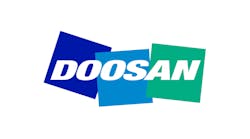Boeing Co. plans to implement a customized parts program in support of its 787 Dreamliner, to give the airlines operating the new commercial jet access to a pool of components and systems that Boeing itself will manage.
The jet builder is more than a year behind schedule in delivering the Dreamliner, for which it has logged an estimated 850 orders from carriers. The Dreamliner is a wide-body twin-engine aircraft, with long range and carrying capacity for 210 to 330 passengers. Boeing has said it will be its the most fuel-efficient commercial jet.
Reportedly, Boeing has logged 850 orders for the 787, which may represent about $100 billion in revenue. Production was due to begin in mid 2008, and the first deliveries were planned for late this year. Among the reasons for delays have been design issues, parts shortages, and labor problems. Now, the first deliveries are expected early in 2011.
The parts program will be a “rotable” arrangement — meaning that components are parts may be restored to a fully serviceable condition repeatedly. Boeing asserts that the program will help airlines reduce inventory costs because of their access to a Boeing-managed inventory pool of parts, ready for shipment within 24 hours of request.
For example, in the Boeing 787 Rotable Exchange Program an airline may remove a part from the plane and ship it for exchange with a new unit from the exchange pool.
“The 787 Rotables Exchange Services Program will provide a dedicated pool of high-value, dispatch-critical parts for airlines, while helping them to improve operations support and cash flow,” stated Dale Wilkinson, v.p. - Material Services for Boeing Commercial Airplanes. “The program manages configuration, warranty and reliability for the covered parts, freeing the airline to focus on passengers and the operation of the airplane.”
Boeing indicates it will support up to 600 high-value rotable parts, such as auxiliary power units and variable frequency starter generators. Dreamliner customers will have access to the exchange program as soon as the jet enters service, the first time that such a program has been developed in conjunction with a new fleet, according to Boeing.
The program also promises to be cost-effective for the airlines, because the parts to be managed may be priced at up to hundreds of thousands of dollars.
The airlines will be able to spread high-cost expenses over the 10-year term of the 787 Rotables Exchange Services Program, and will be able to implement maintenance costs on a flight-hour cost basis.
